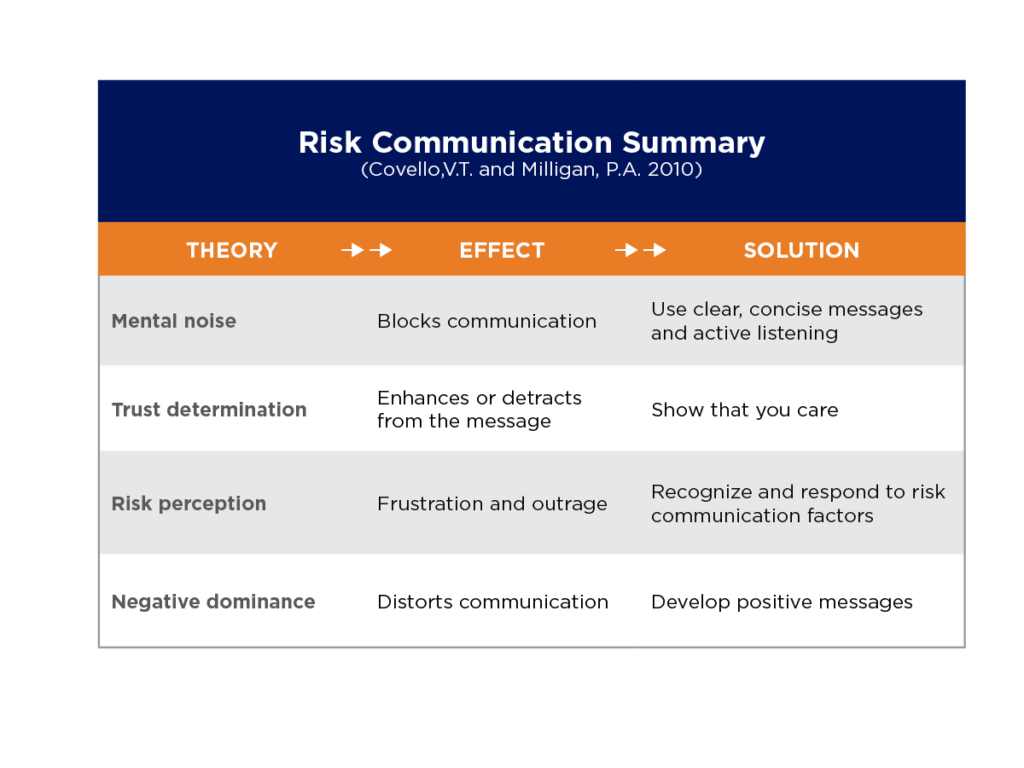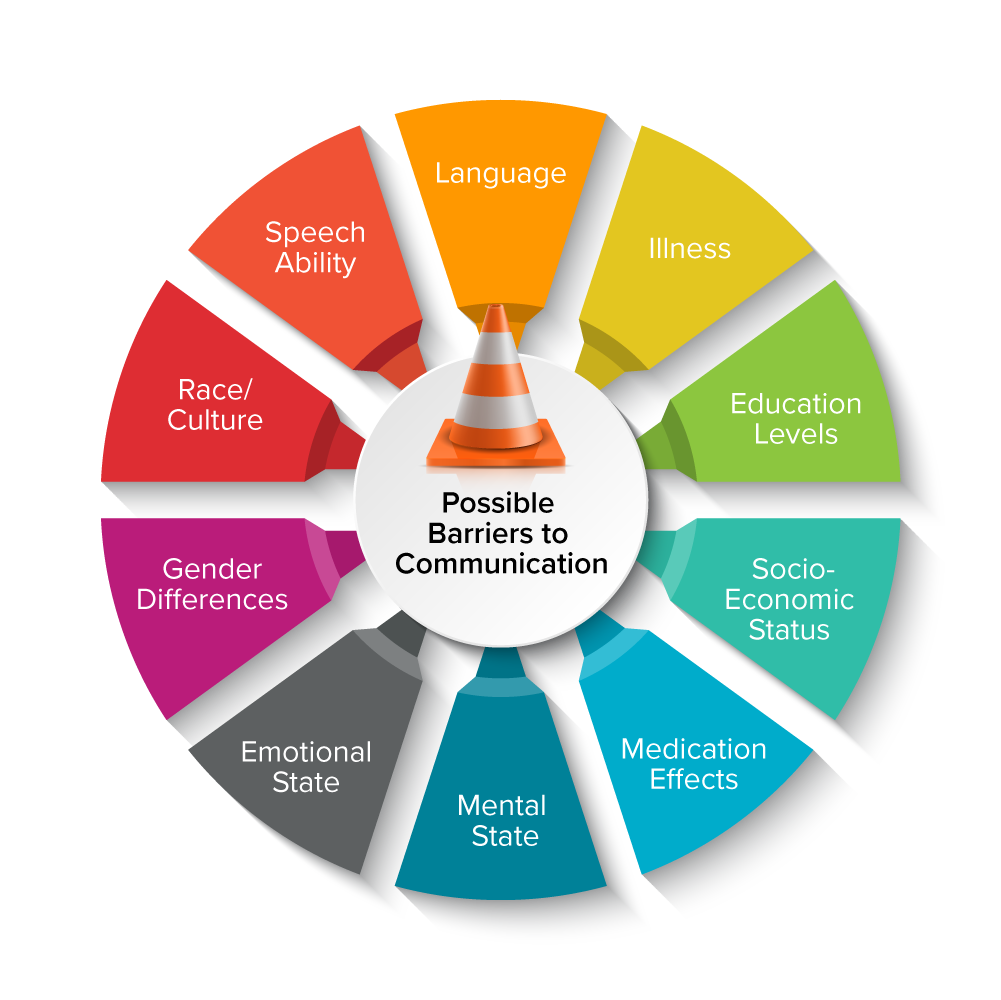No Results Found
The page you requested could not be found. Try refining your search, or use the navigation above to locate the post.

Open, accurate, and consistent communication is one of the most important parts of an effective crisis response. Maintaining trust, particularly during a crisis when information is fluid and oftentimes contradictory, is critical. In order to address these concerns and maintain trust, research has shown communicators must prepare people for changes.
Without clear signals why policies might be changing, public trust in official institutions may be reduced. With a new and changing situation, communicators must prepare people for contradictions. As an example, by caveating statements with phrases such as “based on current trends,” or “based on what we know now,” their audiences can sense the information being provided is fluid and may change as new information becomes available.
Changing policies and date-driven information during a pandemic crisis should not be a big surprise. New information comes in daily and organizations are working to incorporate this new information into guidelines and key messages. However, these changes in messaging can reduce credibility, lower trust, and create confusion if organizations do not prepare people for changes. Public trust can be maintained if change is not due to intentional deception, but rather a changing landscape of new information. However, we must openly, clearly, and consistently remind people information may change.
We must also communicate openly, honestly, and often during a crisis. It’s important to develop effective key messages and to bolster them with good supporting information. The key messages serve as an anchor to which other messages are tethered, and they need to be repeated throughout the crisis. Messages should be crafted so that they are informative and helpful for people to gain a better understanding of the situation. For information that is needed, but not yet available, you should let people know that you are working to find the answers to their questions. Communicators must tell people what is known and what is not known. What is not known should be followed by communicating what steps will be taken in order to find answers to the unknowns.
It’s also important to remember that silence is not golden. If you are silent, it can:
Be seen as an indifference or as an affirmation of wrongdoing
Allows critics, opportunists, and news media to define the crisis, your motives, and your actions
Challenges and invites critics and opportunists to rally public opinion against you
Research conducted by Dr. Vincent Covello shows that it takes as long as two years to regain trust. We must make smart choices quickly to maintain trust as the crisis continues to play out and evolve. If we are unable to make smart choices and implement those choices, then there is great potential trust will fall or we may lose it altogether.
If you remember one thing, make it this: trust is hard to regain. If we can make smart choices quickly, always provide truthful information, and acknowledge information will change as circumstances change, we can maintain trust throughout the crisis. Ultimately, when it comes to maintaining trust, honesty is always the best policy – even if that means telling people something they do not want to hear.
Want to learn more about creating a strategic communications plan? If your organization would like further information on message maps or would like to receive a free crisis communication assessment to develop a crisis communications plan, please contact our experts at info@summitet.com or https://summitet.com/contact-us.
Our Strategic Communication team stands at the ready to forecast cascading threats and develop public communication strategies to influence behavior, build confidence, and maintain the public trust.
SummitET® is recognized by SHRM and offers Professional Development Credits (PDCs) for SHRM-CP® or SHRM-SCP®. For more information about certification or recertification, please visit www.shrmcertification.org.
The page you requested could not be found. Try refining your search, or use the navigation above to locate the post.

Over the past month, COVID-19 has impacted us in ways we never thought possible. We are confronting school closures, working from home, closings of our favorite bars, restaurants, and retail establishments, cancellation of entertainment and sports events, and shortages of food and paper products on grocery shelves. This impact has also been deeply felt by healthcare providers and hospitals.
According to The American College of Emergency Physicians (ACEP) https://www.acep.org/patient-care/policy-statements/health-care-system-surge-capacity-recognition-preparedness-and-response/, surge capacity is…
“a measurable representation of ability to manage a sudden influx of patients. . . dependent on a well-functioning incident management system and the variables of space, supplies, staff . . .”
Surge capacity is unique for each hospital. It is logical to assume hospitals in larger cities have more surge capacity than those located in smaller locales. However, it does not mean the larger hospital has an infinite surge capacity. In a recent Knox County, Tennessee, Health Department COVID-19 news conference, the spokesperson was asked to define surge in layperson terms. In response, the official said it boils down to…
Staff: healthcare providers, doctors, nurses, lab techs, etc.
Space: the number of patient beds available
Stuff: supplies such as protective personal equipment (PPE), masks, ventilators, face shields, drugs, etc.
Situation: COVID-19
On the healthcare front, medical care providers face challenges that include not only making life and death decisions, but long-/short-term mental health and potential post traumatic stress disorder (PTSD) issues, shortages of medical equipment, healthcare workers’ and first responders’ safety. Daily, hospital surge capacity is discussed on every news program. We have become more aware of challenges confronting our healthcare industry as a result of COVID-19.
The average American, who has more than likely seen too many made-for-TV dramas, may assume hospitals can respond to any emergency regardless of its magnitude. COVID-19 presents us with new healthcare jargon to understand such as PPE, vents, face shields, and one of the most important, surge capacity.
To learn more about surge capacity and hospital preparedness, check out these links:
Hospital Preparedness Program (HPP)
https://www.phe.gov/Preparedness/planning/hpp/Pages/default.aspx
Centers for Medicare and Medicaid Services (CMS)
https://www.cms.gov/
Joint Commission on Accreditation for Healthcare Organizations (Joint Commission)
https://www.jointcommission.org/
If your organization would like additional information or to learn more about how SummitET® can support your organization’s preparedness, please contact our experts at info@summitet.com or https://summitet.com/contact-us.

Messages play an important role in determining the success of communication efforts before, during, and after a crisis. One of the major issues facing organizations during a crisis is mixed messages from multiple experts. When this occurs, the public can become unsure which message is the most credible. As a result, the tendency is to reject the message and seek alternate messages that reinforce their own existing belief systems. These “new” messages can be contradictory to valid protective action messages and impact the public’s ability to internalize and act upon the correct message.
Previous research conducted by the Centers for Disease Control and Prevention (CDC) and Dr. Vincent Covello led to the collection and analysis of data as to the importance of crisis communication and message development. The result is a vast array of science-based tools and templates crisis communicators can employ to achieve greater communication success, such as a message map
According to Dr. Covello, a message map is a roadmap for displaying detailed, hierarchically organized responses to anticipated questions or concerns. It is a visual aid that provides the organization’s messages for high concern or controversial issues.
Developing and using message maps achieves several important communication goals:
Identifying stakeholders early in the communication process.
Anticipating stakeholder questions and concerns before they are raised.
Organizing our thinking and developing prepared messages in response to anticipated stakeholder questions and concerns.
Developing key messages and supporting information within a clear, concise, transparent, and accessible framework.
Promoting open dialogue about messages both inside and outside the organization.
Providing user friendly guidance to spokespersons.
Ensuring that the organization has a central repository of consistent messages.
Encouraging the organization to speak with one voice.
Book a workshop to develop personalized Pre-Scripted Messages.

Based on Covello’s mental noise theory, humans have a diminished ability to process information when in a crisis. Therefore, message maps use the “Rule of Three”:
Ideally three key messages (or one key message with three parts) for each underlying concern or specific question.
Individual key messages should also be brief; ideally less than three seconds (or fewer than nine words) for each key message. The entire set of three key messages should be less than nine seconds (or 27 words).
Responses to high risk, high concern crises such as a pandemic require organizations to recast their understanding and thinking about how to communicate information that protects the health and safety of the public, as well as their reputation and trust.
Check out this excellent resource titled “COVID-19: Simple Answers to Top Questions Risk Communication Field Guide Questions and Key Messages” which was published on March 25, 2020 and developed by Vincent Covello and Randall Hyer. This resource offers many crisis communication tools and templates to help your organization achieve success in response to COVID-19.
If your organization would like further information on message maps, identifying and addressing misinformation on social media, or would like to receive a free crisis communication assessment to develop a crisis communications plan, please contact our experts at info@summitet.com or https://summitet.com/contact-us.
Our Strategic Communication team stands ready to forecast your organization’s cascading threats and develop public communication strategies to influence behavior, build confidence, and maintain the public trust.
Elevate your team's communication game with our flexible strategic communications workshops. Whether it's in-person, virtual, or hybrid, we offer tailored training options to suit your goals. Empower your team today and enhance your communication skills with expert guidance.

Planning for the inevitable, a crisis or emergency, is a practice every organization should employ. As we’ve seen recently with COVID-19, the unthinkable can become thinkable, and planning, strategizing, training, and exercising are essential functions for any organization to successfully weather a crisis or emergency.
While effective communications during a time of crisis can positively reflect on an organization, ineffective communications during a time of crisis or emergency can surely endanger an organization and potentially the lives of an organization’s stakeholders. Ultimately, it is the organization’s responsibility to determine which communication path to take. This is why it is incumbent upon organizations to develop, train and exercise a crisis communications plan.
Stakeholders tend to simplify messages to match their belief system paradigm(s). Communication professionals should evaluate their messaging processes for clarity, conciseness, and relevance to ensure internal and external stakeholders recognize, synthesize, internalize and act on the message(s). During decision making processes, communication professionals should consider both intended and unintended consequences may occur due to underlying organizational and stakeholder issues. Awareness of underlying issues that may impact internal and external stakeholders should be considered.

Depending on the incident, psychological considerations can have tremendous impact on individuals and organizations by influencing how they process information. Selecting and structuring communication may vary based on the issue, impact (perceived and real), timeliness, etc., as well as the delivery mechanism, i.e., social media. Communicators should develop messages centered on what stakeholders might do to protect themselves and their families, i.e., call the doctor, check on a neighbor/elderly, etc.
Research by Dr. Vincent Covello, indicates that individuals can process up to three key messages in times of crisis. Use of a message map that can be integrated into your crisis communication plan is suggested to ensure your messages are hitting the mark and that your organization is not adding mental noise by providing information overload.

Uncertainty is the greatest concern for most stakeholders. Provide them with a three-part action plan: 1) what they can do, 2) what they should do, and 3) what they must do to protect themselves and their families. An action plan may help reduce anxiety, feelings of victimization, and help to restore a sense of self-control.
Other demographic data such as socio-economic status and educational attainment of the stakeholder community can affect communication during a crisis or emergency. Ongoing research suggests socio-economic status and education disparities can impact stakeholders’ receptiveness (filtering) of crisis messaging. These two factors can greatly influence an organization’s message(s) delivery and development methods (i.e., such as social media, platforms, texting, written or visual media, etc.). Communicating messages to special populations such as expecting mothers, homeless, substance abusers, and evacuees, must be considered. In addition to socio-economic status, educational levels, and other issues , the audience’s perception/acceptance of risk, your credibility, message context, verbal and nonverbal cues, and other influencing factors may create barriers or otherwise impede message acceptance. Developing messages that are simple, timely, accurate, relevant, credible, and consistent will help overcome most communication barriers.

Appropriate use of crisis and risk communication techniques and principles can be used to motivate stakeholders in taking appropriate actions or prevent stakeholders from taking inappropriate actions during a crisis or emergency. As communication professionals, our ultimate goal is to keep our stakeholders informed about issues affecting their lives and to potentially save lives.
If your organization is interested in developing a crisis communication plan or training/exercising to an existing plan to identify gaps, strengths, and weaknesses, please contact the SummitET® Strategic Communications team.
Elevate your team's communication game with our flexible strategic communications workshops. Whether it's in-person, virtual, or hybrid, we offer tailored training options to suit your goals. Empower your team today and enhance your communication skills with expert guidance.

The Public Information Officer (PIO) is a critical link between the organization for which they work and the communities they serve. It is important for the PIO to have tools and resources available for immediate utilization during an incident.
During a crisis, the PIO will be bound to their phone, tablet, or laptop and may need to relocate from an Emergency Operations Center, to a Joint Information Center, or even out into the field. This resource provides a list of items for a PIO operational readiness, developed by SummitET® Strategic Communications experts.
Download this free resouce created by SummitET experts.
It is also important to note that prior to an incident or planned event, agreements with businesses or agencies should be established to assist with operations to ensure there are no limitations on information sharing and aggregation products. Examples include;
Contracts with translation services
Printing companies (in order to publish brochures, fact sheets, or other emergency documents)
Social media services (such as agreements with Facebook, Twitter, etc.)
The page you requested could not be found. Try refining your search, or use the navigation above to locate the post.